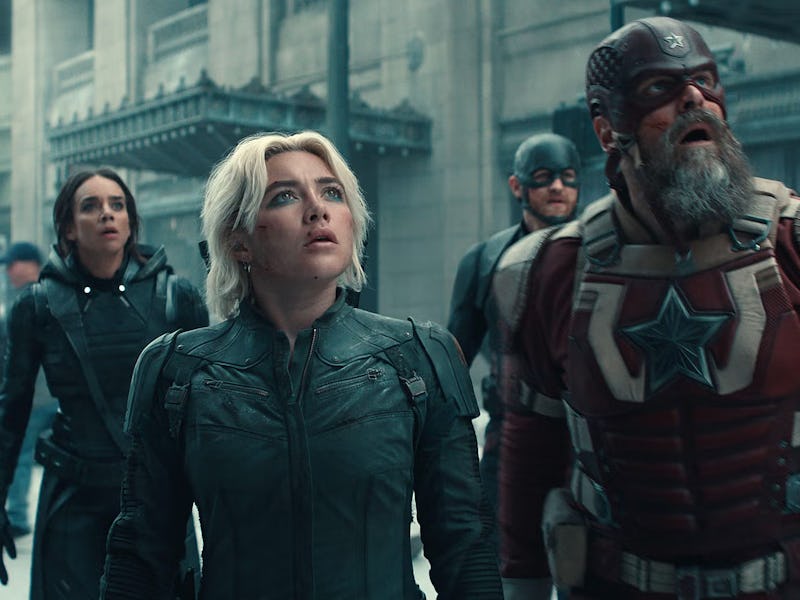Thunderbolts* Is The MCU’s First Street-Level Team-Up Movie
The New Avengers keep things grounded.

The overwhelming consensus around Marvel’s Thunderbolts* — or, if Marvel advertising is anything to go by, Marvel’s New Avengers — is that it brings back the ineffable magic of the Avengers movies of the past. There’s an unlikely team, clashing personalities, and a massive battle in Manhattan, all classic hallmarks of 2012’s Avengers.
But this is Marvel in a new era, one that’s a little darker and morally gray, just like the Thunderbolts themselves. They’ve all worked for Valentina on special ops duty, and all have way too much blood on their hands than they’d care to admit, a fact that fundamentally changes how they operate — and how Thunderbolts* compares to other super-squad movies.
Warning! Spoilers for Thunderbolts* ahead!
The Void wreaks havoc on Manhattan, but the Thunderbolts focus on civilians.
In Thunderbolts*, the newly-formed team of Yelena Belova (Florence Pugh), Red Guardian (David Harbour), John Walker (Wyatt Russell), and Ava Starr (Hannah John-Kamen) are in the street after leaving their confrontation with Valentina (Julia Louis-Dreyfus) when they see something ominous in the sky: The Void, the darkest side of Bob, aka Sentry (Lewis Pullman). He is equipped with one of the most terrifying powers in the whole MCU — the ability to vaporize anyone out of existence entirely, leaving only a shadow.
Some of his first victims are the pilots of the helicopters around him, and that has massive knock-on effects: The helicopters fall out of the sky and hit a crane, which in turn hits a building, which rains debris down on the street. Instead of trying to take down Void (which would be impossible anyway, since none of the Thunderbolts could fly), the team takes on the task around them: protecting the civilians on the street and evacuating who they can, even as a darkness spreads throughout the city.
This is quite the change of pace for the MCU, and positions Thunderbolts* as the first “street-level” super-squad movie, a term that has been used to describe more vigilante-esque heroes like Daredevil, Spider-Man, and Hawkeye. These heroes are all too aware of the collateral damage superheroes can cause, so their first priority is limiting civilian casualties.
Kate Bishop’s dad was collateral damage when the Avengers defended New York in 2012, as we saw in Hawkeye.
Avengers, on the other hand, didn’t take the same tactic. Heroes were battling Loki and the Chitauri on that very same street, but the fight was mainly based in the sky, with collateral damage being seen as an unavoidable side effect. In the years after, though, we saw how these “unavoidable” casualties affected countless characters. Take, for example, Kate Bishop. She was living in a penthouse that was heavily damaged during the Battle of New York, resulting in the loss of her father. For her, the battle may have been won, but the personal loss was incalculable.
The Thunderbolts faced a similar threat to the Avengers, but they were able to bring everyone back from the Void’s “shame rooms,” so their battle didn’t have any casualties whatsoever. It’s a small mercy compared to all the work the antiheroes faced in their path, but it shows that the MCU hasn’t forgot about what matters most: Superheroes saving crowds from a terrifying foe, not just defeating them.